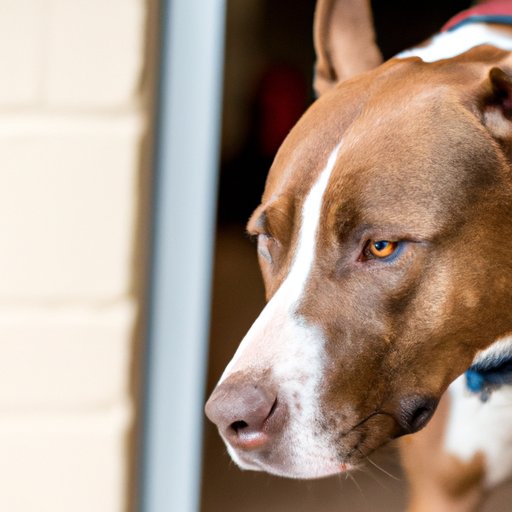Introduction
As the owner of a furry friend, it is common to hear your dog whine from time to time. While it may seem like an annoying or confusing behavior, it is essential to understand that whining is a form of communication in dogs. In this article, we will explore the reasons why dogs whine, different types of whining, and how to address this behavior. This article is written for pet owners who want to deepen their understanding of their dog’s behavior and establish a strong relationship with their furry friend.
According to experts, dog whining is a common behavior, and it can indicate many things, such as discomfort, anxiety, or just the desire for attention. Understanding why your dog is whining is essential to help you determine how to address it properly.
Common Reasons Why Dogs Whine
Attention-seeking behavior
One of the most common reasons why dogs whine is to get their owner’s attention. Dogs know that the high-pitched tone of their whine can attract their owner’s attention quickly. In many cases, the behavior starts by accident; a dog may whine while seeking attention, and when their owner responds, the dog recognizes that whining is a successful communication tool. Therefore, the dog may repeat the behavior when they want their owner’s attention.
Pain or discomfort
Dogs may also whine when they are in pain or uncomfortable. They may vocalize their pain to alert their owner to their discomfort or to seek help. Since dogs can’t verbalize their pain, they may use their whines to express themselves.
Anxiety or stress
Whining can also result from anxiety or stress. Dogs may whine when they feel anxious, scared, or overwhelmed. This type of whining is often accompanied by other signs of stress, such as pacing, trembling, or panting.
Boredom or frustration
Dogs can also whine out of boredom or frustration. They may whine to express their dissatisfaction or discomfort with their environment or the lack of attention from their owner.
Different Types of Dog Whining and Their Meanings
Playful whining
Playful whining is common among puppies and younger dogs. It usually occurs during playtime when the dog is having fun. This type of whining is typically accompanied by a wagging tail and relaxed body language.
Greeting whining
Dogs may whine when greeting their owners or other dogs. This type of whining is a form of communication that expresses joy and enthusiasm. It is usually accompanied by wagging of the tail, jumping, and panting.
Separation anxiety whining
Dogs with separation anxiety may whine when left alone. This type of whining is usually accompanied by destructive behavior, such as chewing or digging. Dogs with separation anxiety may also pee or poop inside the house when left alone.
Other types of whining
Dogs may whine to express a range of emotions, such as fear, insecurity, or frustration. For example, they may whine when they are afraid of loud noises, such as thunder or fireworks. Some dogs may whine to indicate that they want to go outside or to ask for food or water.
Tips to Stop Dog Whining
Behavior training techniques to address the root of the problem
One of the most effective ways to stop dog whining is to address the underlying behavior issue. For example, if your dog whines to get your attention, you can teach them an alternative, polite way to get attention, such as sitting quietly or bringing their toy to you.
Increasing exercise and playtime to reduce anxiety
Regular exercise and playtime can help reduce anxiety and stress in dogs, which may decrease whining behavior. Taking your dog for a daily walk or playing fetch in the backyard can be an effective way to reduce whining and other problem behaviors.
Crate training and desensitization techniques
Crate training can be an effective way to reduce whining and destructive behavior in dogs with separation anxiety. It is essential to make the crate a safe and comfortable space for your dog and gradually desensitize them to being alone.
Consistency and positive reinforcement
Consistency and positive reinforcement are essential in addressing dog whining. You should use the same commands and reward your dog consistently when they display the desired behavior. Never punish your dog for whining, as this can escalate the behavior.
Understanding Breed-Specific Whining
Different breeds are known to whine more than others. For example, breeds such as Beagles, Dachshunds, and Basset Hounds are known for their expressive vocalizations. Understanding your dog’s breed-specific behaviors can help you anticipate and address their whining behavior more effectively.
Why It’s Important to Understand Dog Whining
Understanding dog whining is crucial for pet owners for several reasons. First, it can help improve communication between pet owners and their furry friends. Second, by identifying the underlying cause of whining, pet owners can work to prevent future behavior problems. Finally, accurate interpretation of dog whining can help pet owners build a stronger bond with their dog.
Personal Stories About Dog Whining
Anecdotes from other dog owners can help to shed light on the issue of dog whining and the different approaches that worked for them. For example, one dog owner shared that their dog used to whine constantly when left alone, but after crate training, their dog stopped whining and was more comfortable spending time alone.
Conclusion
In conclusion, dog whining is a common behavior, and it is essential to understand its causes and types. Through training, increased exercise and playtime, and an understanding of breed-specific whining, pet owners can help address this behavior and prevent potential problems. By building a strong relationship with your dog, you can improve communication and create a happy and healthy bond. Remember to be patient and consistent in your approach, and always seek professional help if the whining persists.
